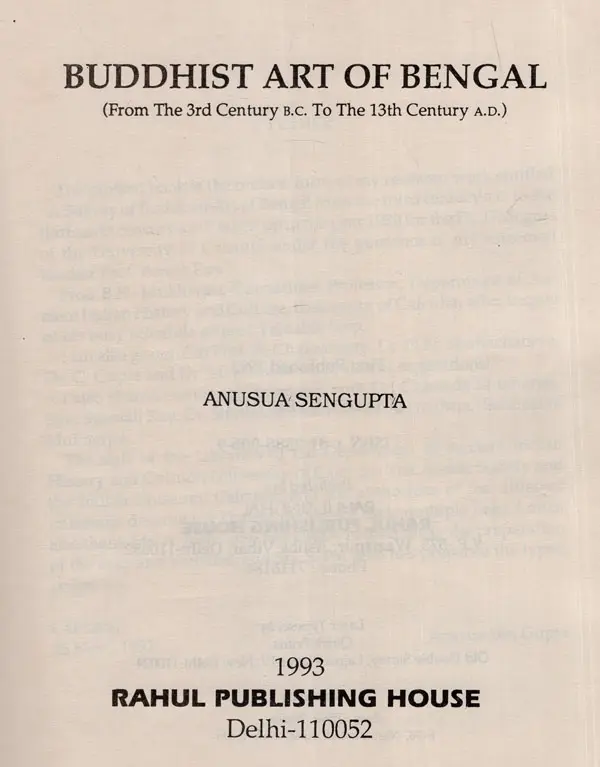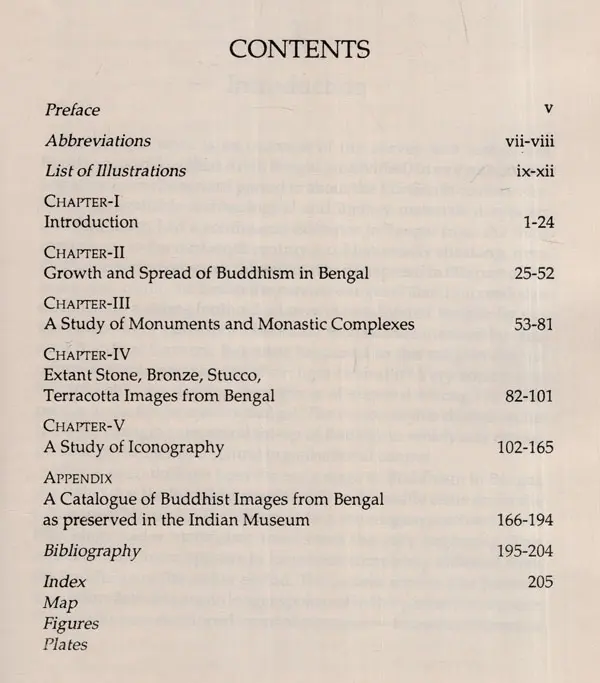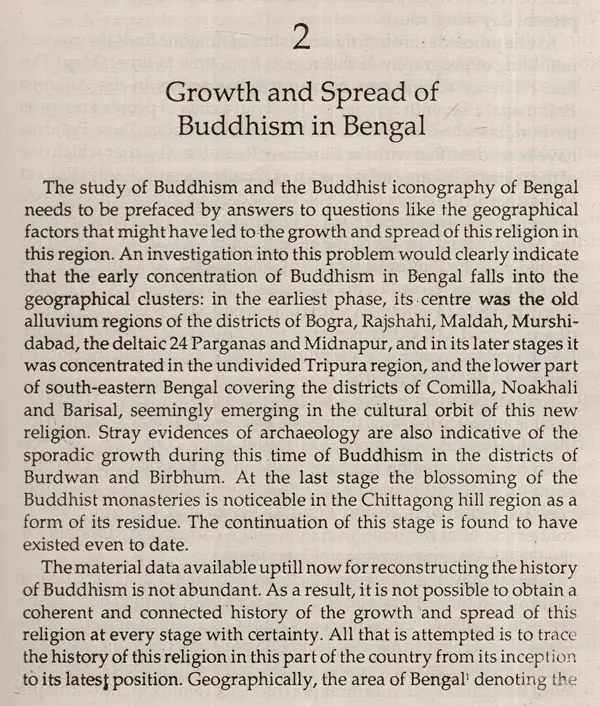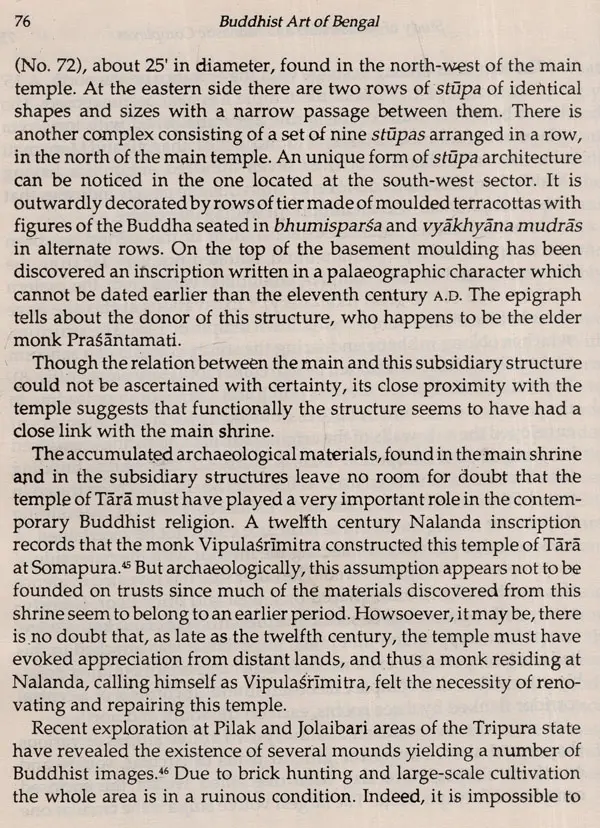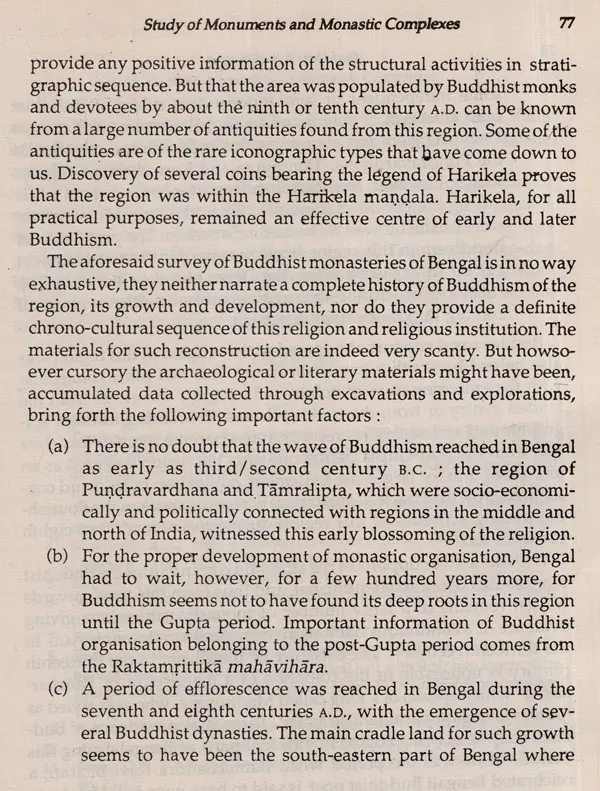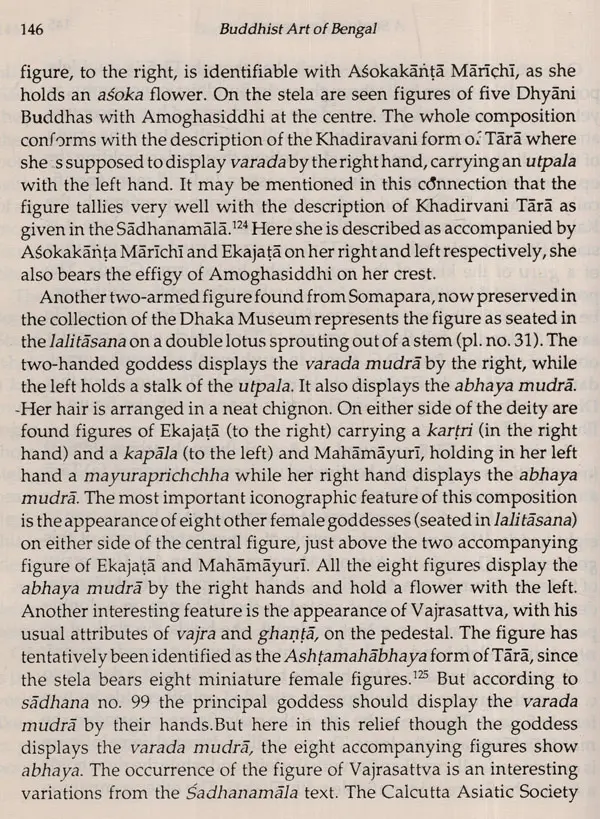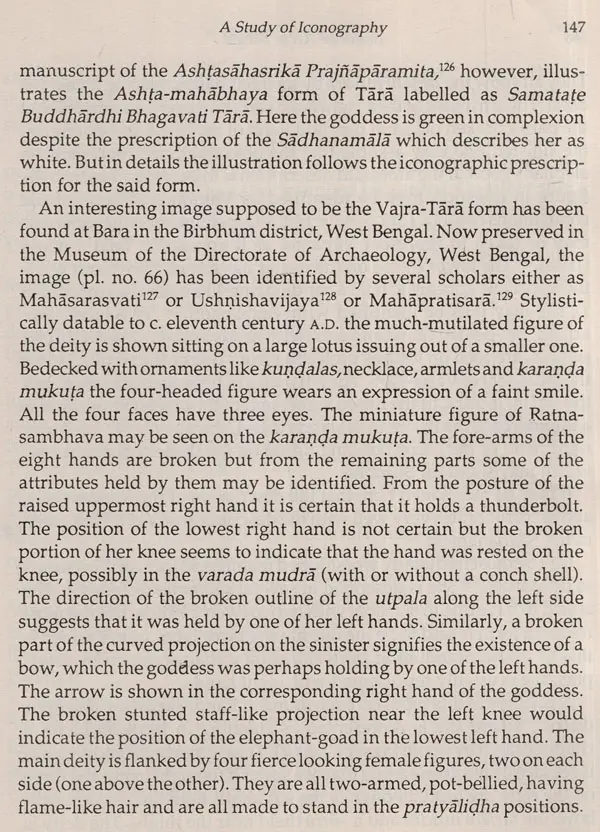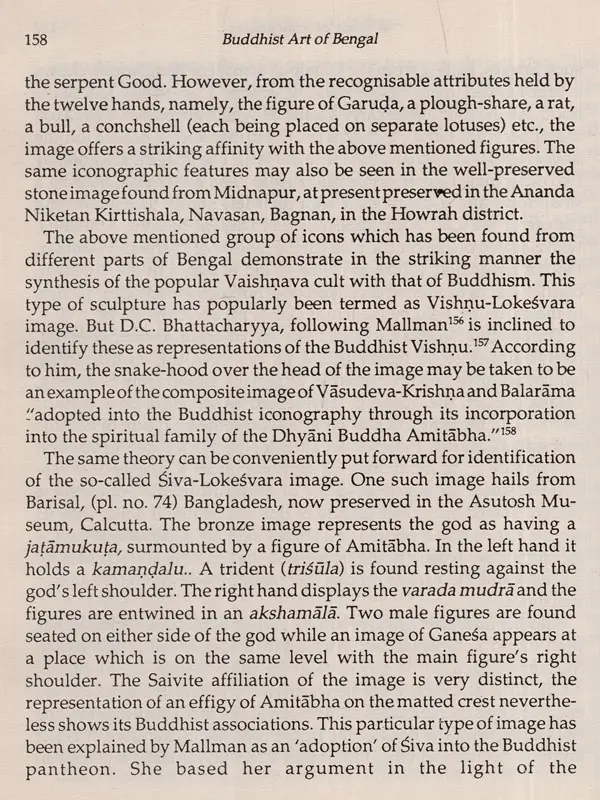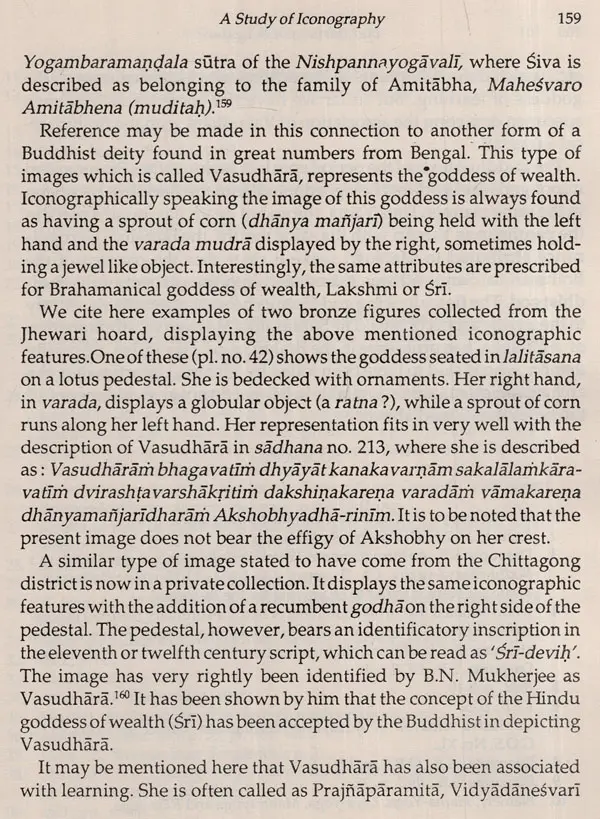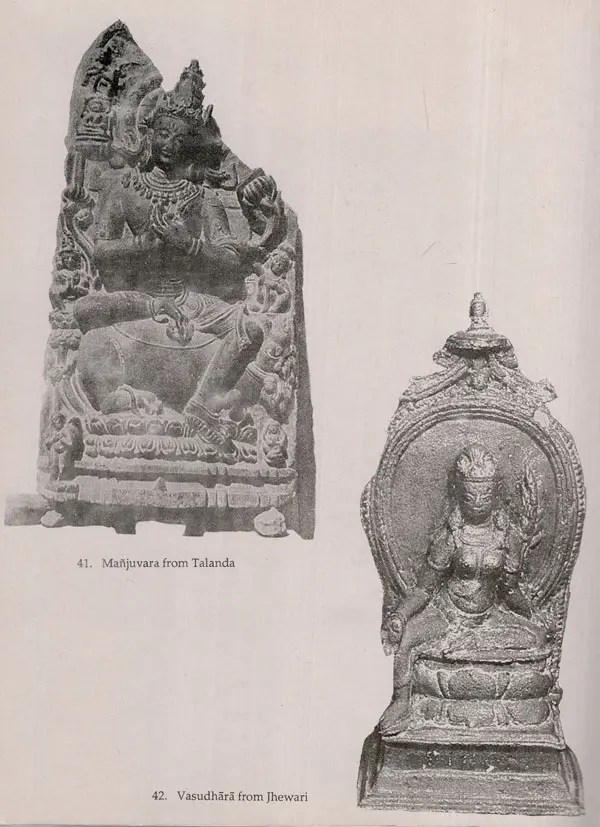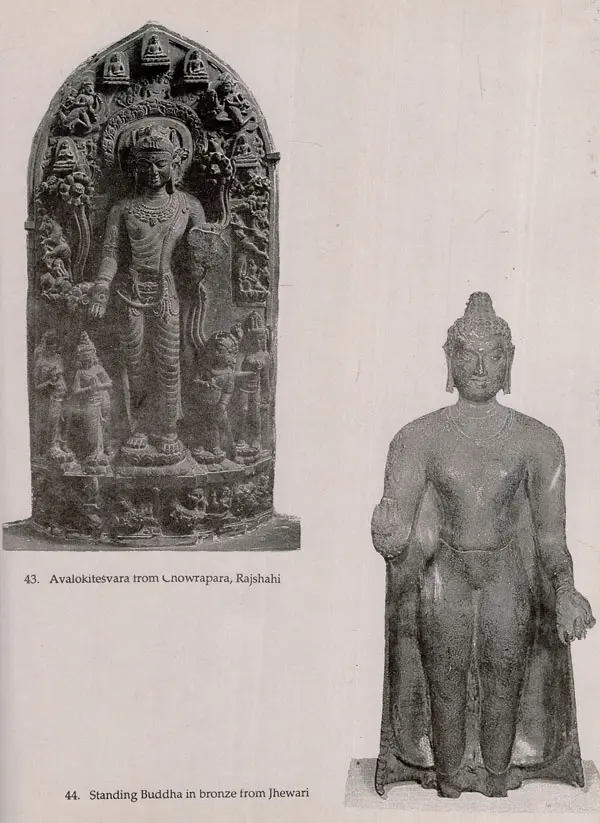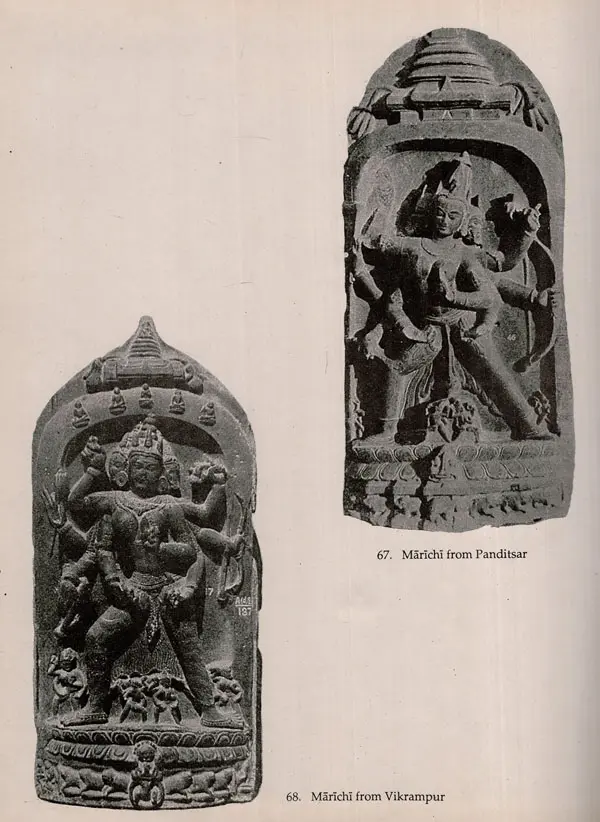
Buddhist Art of Bengal (From The 3rd Century B.C. To The 13th Century A.D.) (An Old and Rare Book)
Book Specification
| Item Code: | UAP185 |
| Author: | ANUSUA SENGUPTA |
| Publisher: | Rahul Publishing House |
| Language: | English |
| Edition: | 1993 |
| ISBN: | 8173880069 |
| Pages: | 274 (Throughout B/w Illustrations) |
| Cover: | HARDCOVER |
| Other Details | 9.50 X 7.50 inch |
| Weight | 720 gm |
Book Description
The present work is an outcome of a survey and research of Buddhism and Buddhist Art in undivided Bengal in an evolutionary sequence from the earliest period the thirteenth century A.D. It is a comprehensive survey of the socio-economic background of the growth and spread on the religion concerned alongwith the structural characteristics of Buddhist monuments and the stylistics and iconographic features of the Buddhist icons in stone, bronze, stucco, terracotta and paintings in the perspectives of their respective sources.
The present work is an outcome of a survey and research of Buddhism and Buddhist Art in undivided Bengal in an evolutionary sequence from the earliest period the thirteenth century A.D. It is a comprehensive survey of the socio-economic background of the growth and spread on the religion concerned alongwith the structural characteristics of Buddhist monuments and the stylistics and iconographic features of the Buddhist icons in stone, bronze, stucco, terracotta and paintings in the perspectives of their respective sources.
The present book is the revised form of my research work entitled "A Survey of Buddhist Art of Bengal from the third century B.C. to the thirteenth century A.D." taken up in the year 1980 for the Ph. D. degree of the University of Calcutta under the guidance of my esteemed teacher Prof. Amita Ray.
Prof. B.N. Mukherjee, Carmichael Professor, Department of An cient Indian History and Culture, University of Calcutta, who, inspite of his busy schedule offered valuable help.
I am also grateful to Prof. A. Chakraborty, Dr. N.N. Bhattacharyya, Dr. C. Gupta and Dr. M. Mitra for their useful suggestions. I also shared memorable moments with Dr. Chhanda Mukherjee, Smt. Syamali Ray, Dr. Somenath Mukherjee and Dr. (Mrs.) Santipriya Mukherjee.
The staff of the Libraries of the Department of Ancient Indian History and Culture, University of Calcutta. The Asiatic Society and the Indian Museum, Calcutta, and the authorities of the different museums deserve my sincere thanks for their multiple help. I must also thank Mr. A. Joshi who has kindly helped me in the preparation of the map and sketches, and Sri. S. Pal who has prepared the typed script.
The present work is an outcome of my survey and research of Buddhism and Buddhist Art in Bengal (undivided) in an evolutionary sequence from the earliest period to about the thirteenth century A.D... From the available archaeological and literary materials it appears that Buddhism had a continuous existence in Bengal from the third century B.C. to the thirteenth century A.D. Historically speaking, from the Gupta period onwards this religion had its spread in this part of the Indian sub-continent. Under the parama-saugata Pālas it succeeded in establishing a strong foothold all over the undivided Bengal. By this time there were numerous celebrated monasteries manned by emi nent Buddhist teachers. But what happened to this religion despite unquestionable organisational strength behind it? Very soon it was lost into oblivion, leaving faint traces of survival among the tribal people in the fringe areas of Bengal. The reason of this change seems to be the changing structural set-up of Buddhism which was caused because of the lack of a central organisational control.
Whatever could have been the early stage of Buddhism in Bengal, it is found that the Buddhist creed slowly and steadily came under the influence of Mahayana Buddhism. In fact, the religion practised by the Pāla kings had a Mahayanic trend from the very beginning. This aspect of Buddhism appears to have been completely different from the Buddhism of the earlier period. The ancient schools like Samma tiya or Sarvästivada are no longer spoken of in this part of the country. The religion now developed forms of mysticism-known as Vajrayana and Tantrayana, the leaders of which are celebrated in Buddhist tradition as Siddhas, who were supposed to be eighty-four in number. This mystic Buddhism is said to have assumed three important forms: Vajrayana, Sahajayana and Kalachakrayana. In Bengal mystic Bud dhism became so popular that subsequently it became the substratum of the Buddhist religion of later days. During the period between the tenth and the twelfth centuries A.D. there were a few Buddhist monas teries in Bengal in which only a handful of sophisticated intellectuals of the earlier order were engaged in formulating the subtlest logic to prove the unreality of the world. The general trend was to practise religious rites and rituals necessary for attainment of worldly require ments through mystical means. These conditions led to the emergence of numerous flexible systems. Unfortunately, we have limited data which can throw light on these changing phases of Buddhism. But we have evidence to indicate that in Bengal a large number of monaster ies, namely, the Somapura,the Traikutaka, the Devikota, the Pandita, the Pattikeraka, the Vikramapuri and the Jagaddala grew up in the Gupta/post-Gupta period, where the siddhacharyas are said to have practised their mystic activities.
Book's Contents and Sample Pages
